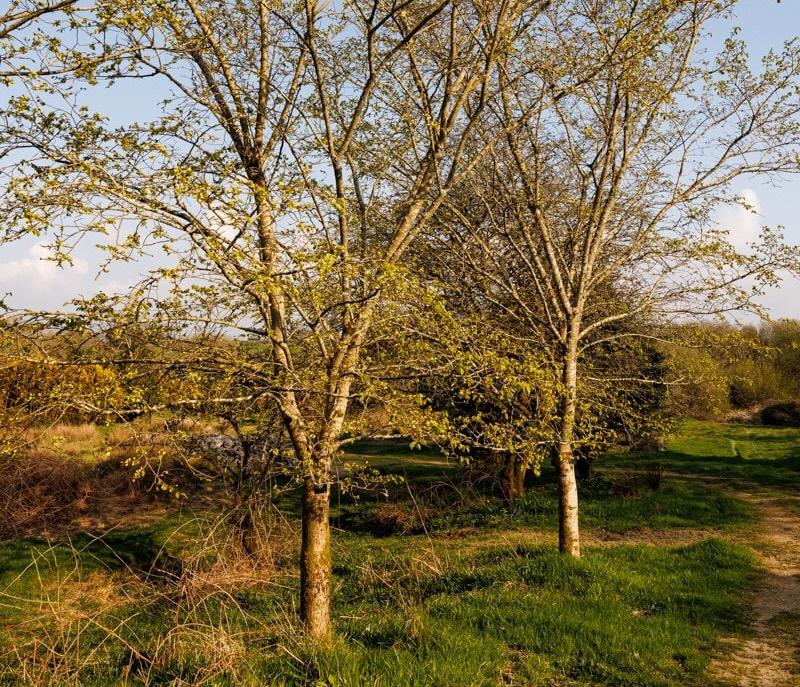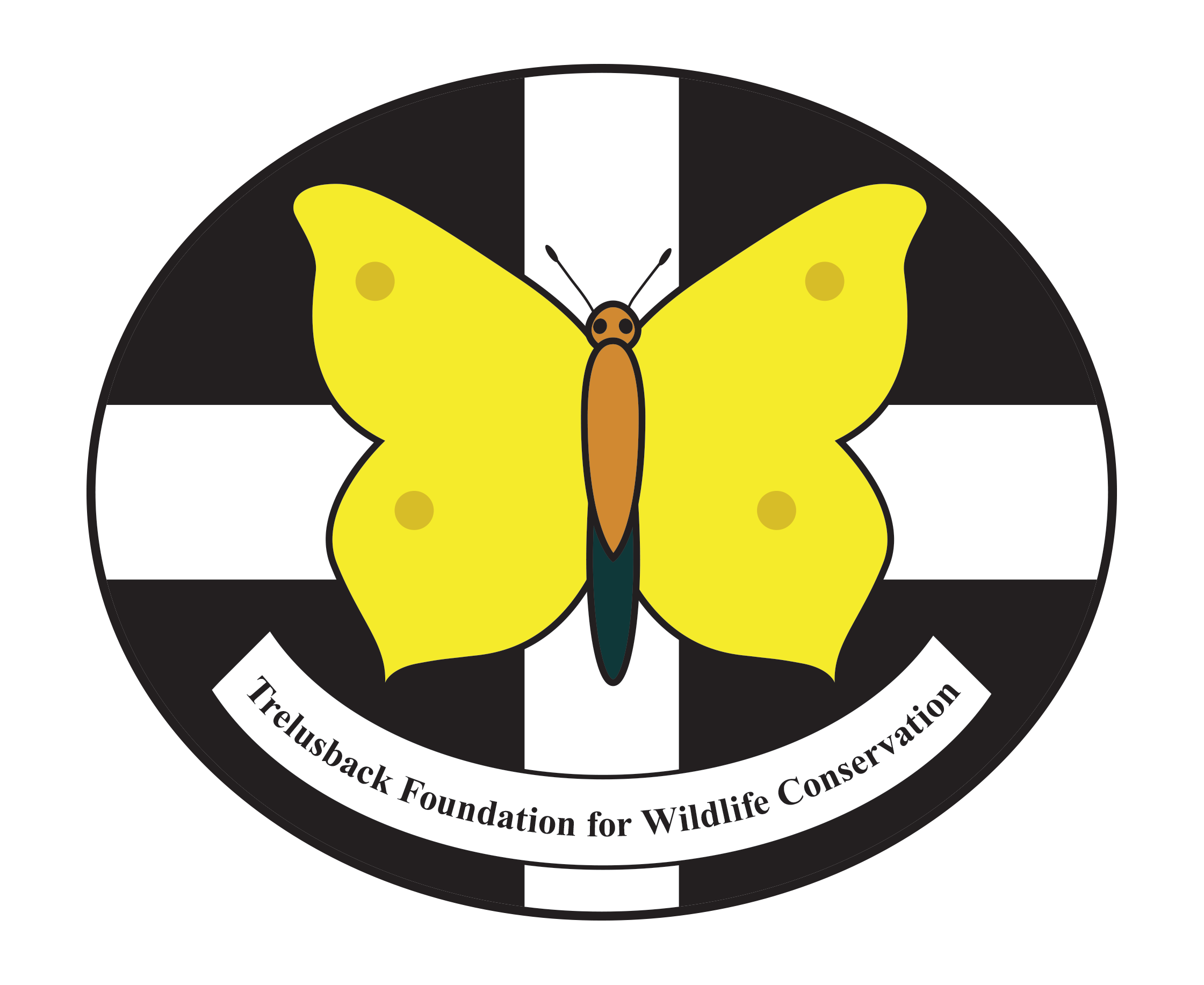
Disease-resistant elm trials
The field trials of elm trees believed to be resistant to Dutch Elm Disease (DED) are continuing at Trelusback with promising results. Most of the eleven different elm species and hybrids planted appear to be very suited to the local soils and climate. To date none of the elms have suffered from any diseases but are being monitored closely. The suitability of the elms for West Cornwall’s native insects is not proven and needs to be assessed.
The majority of the hybrid elms, which were produced at research centres in the Netherlands, Spain and Italy, were planted at Trelusback in 2012.
Several Ulmus minor trees believed to have some resistance to DED have also been planted more recently. These trees were discovered in Spain. They are the same species as many of the ‘Field elms’ and ‘Cornish’ elms which succumbed to DED in Britain and other countries. In Spain this species reproduces from seed and is therefore more varied in size, shape and disease resistance compared with the Ulmus minor trees in Britain. A small number of the trees in Spain were found to have good levels of disease resistance to DED. They were tested by inoculating them with the disease. Rooted cuttings have been obtained of three of these trees which have been named Ulmus minor ‘Retiro’, Ulmus minor ‘Ademuz’ and Ulmus minor ‘Dehesa de Amaniel’ by the University of Madrid for identification purposes. To date they are all doing well at our Trelusback site.
Our “native” Ulmus minor trees in Britain which include the ‘Field Elm’ and ‘Cornish’ elms, are believed to have been introduced from other countries probably by the Romans. They were typically cloned by using suckers or cuttings but unfortunately were cloned from trees with poor disease resistance. These trees thrived in Britain for many years prior to the arrival of Dutch Elm Disease (DED). The elms were introduced for many purposes including water pipes (when hollowed out), vineyard posts, waterways and boats. Since the arrival of DED these trees in Cornwall now typically grow for ten to fifteen years before becoming attractive to the beetles that carry the disease. The infected trees die back to the ground before producing suckers. The cycle of growth and die back is then repeated. Each time this happens the caterpillars of butterflies and moths that use elm trees are unlikely to survive.
Many of the hybrid trees obtained from Italy in 2012 are now flowering profusely each Spring. This makes them potentially suitable for colonisation by the White-letter Hairstreak butterfly. It is believed that these hybrid elms and other elm trees at Trelusback will also be suitable for a future White-letter Hairstreak research project to study the butterfly’s dependence upon elm flowers for the early stages of its life cycle. This butterfly has not been seen at Trelusback for over 20 years since the previously existing Cornish elm trees succumbed to DED Elm Disease. Some of the new trees have already been used by the Comma butterfly with their larvae typically being found on the South side of the trees. Purple Hairstreak butterflies have also been seen feeding on the honeydew left behind by aphids. Many moth species have also used the trees as larval food.
With the exception of one American elm and four Ulmus laevis elms, all of the elms planted at Trelusback were cloned from trees previously tested at the research centres in Europe and found to have good resistance to Dutch Elm Disease. It is hoped that they will be suitable to replace the many ‘Cornish’ and ‘English Field’ elm trees lost to disease over the last sixty years. To date the new trees have shown no evidence of damage by disease despite being near the ‘Cornish’ elms which continue to die back to ground level when attacked by the beetles that carry the disease. It is possible that the Dutch Elm Disease will mutate again and could kill some of the elms currently resistant to the disease. For this reason a wide variety of elm species and hybrids have been planted at Trelusback. We will continue to introduce new varieties of disease resistant elms as they become available.
There are also other diseases of elms such as Elm Yellows therefore it is possible that some of the trees could succumb to this and other diseases.
